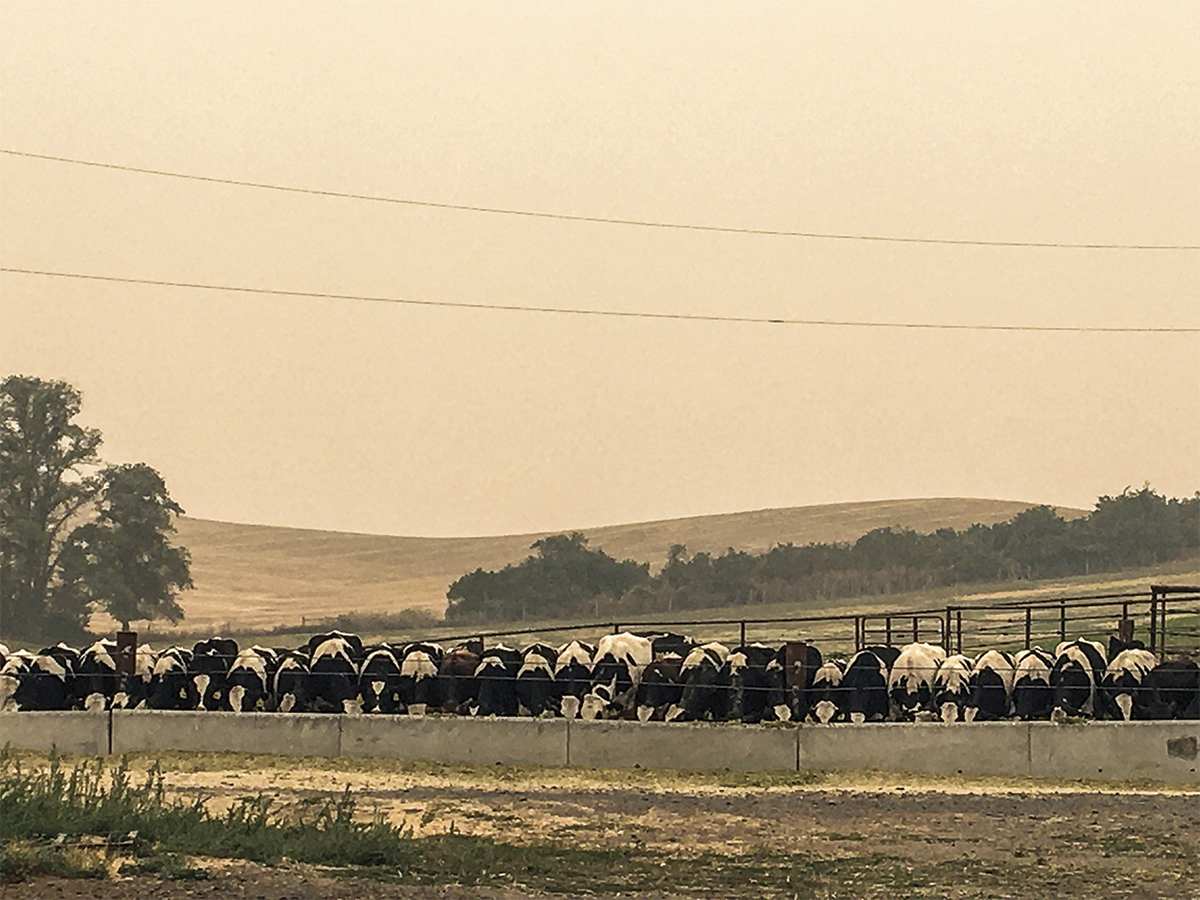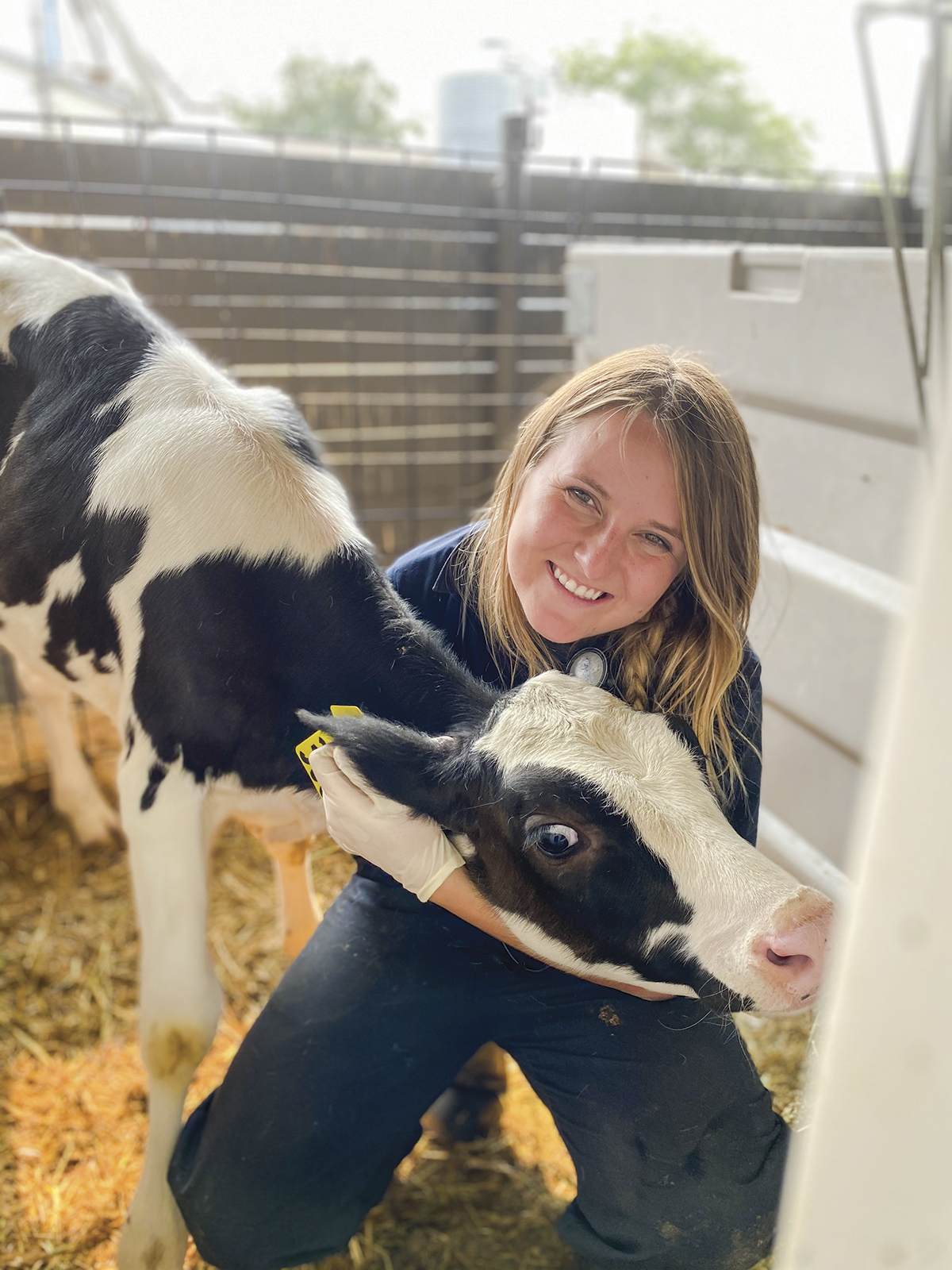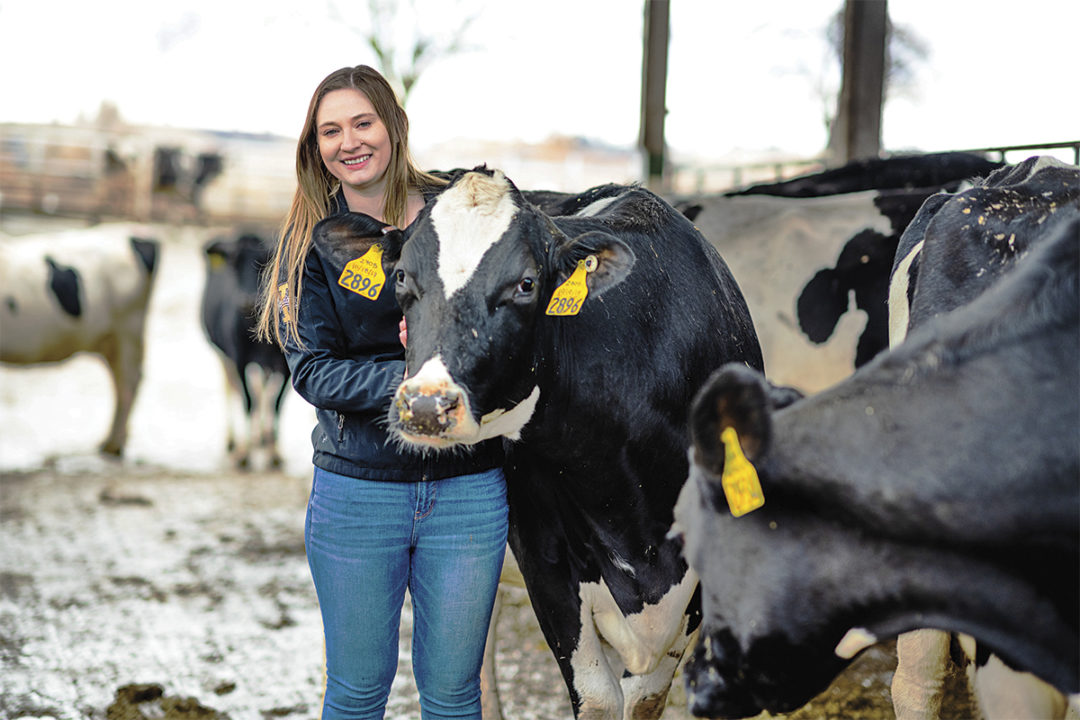It’s another hot summer day, but something is off: The sun has a reddish hue, the light is dim, and the wind carries the smell of destruction. No, it isn’t the apocalypse but just another wildfire season in the West.
The annual influx of wildfire smoke – even in regions far removed from active burns – is typically accompanied by warnings about ill health effects from excessive exposure. Many people have the option of retreating indoors, but some researchers are asking: What about livestock?
‘Animals must be affected, too’
Dr. Amy Skibiel, assistant professor in the department of animal, veterinary and food sciences at the University of Idaho (UI), is one of those researchers. She and her students are investigating effects of wildfire smoke on the UI dairy herd in Moscow.
The question came up in a conversation with colleague Dr. Pedram Rezamand, and no one else seemed to be asking it. “If humans are affected by smoke, animals must be, too,” says Skibiel of the premise behind the work
With a background in environmental physiology, a research emphasis on lactation biology and a small herd of Holstein cows handy, Skibiel was in a perfect position to answer that question.
Cows and wildfire smoke
In 2020, Skibiel and her graduate students initiated a study on UI’s mature dairy cattle. They measured several variables in 13 July-calving cows, including temperature, weight, body condition score (BCS) and milk production. They also analyzed milk and blood samples periodically. In both this and a later calf study, researchers established a “control” when skies were clear, for comparison with datapoints taken during and immediately after smoke exposure.
 Heavy wildfire smoke pollution, such as that experienced by these
Holsteins at the University of Idaho Dairy Center, can cause ill health
effects and production loss. Photo by Amy Skibiel.
Heavy wildfire smoke pollution, such as that experienced by these
Holsteins at the University of Idaho Dairy Center, can cause ill health
effects and production loss. Photo by Amy Skibiel. Researchers used the official air quality and temperature measurements from an Idaho Department of Environmental Quality weather station 3 miles from the dairy center. “We were looking specifically at fine particulates and how they relate to the measurements described,” says Skibiel. Fine particulates (PM2.5) are particles 2.5 µm in diameter or smaller. In human literature, they are considered the most damaging component of wildfire smoke. “Fine particulates can be inhaled deep into the pulmonary tract, where they can deposit in the lower airways and in the alveoli … and impede normal gas exchange,” Skibiel says. They are even small enough to cross membranes into the bloodstream, travel through the body and cause systemic responses well outside the lungs.
Since effects of high temperature and humidity are known to negatively impact cattle health and productivity, researchers incorporated the temperature-humidity index (THI) into their statistical models. These values helped differentiate between effects of pollutants and those of the extant weather conditions.
Skibiel and her students found that high PM2.5 in conjunction with high THI triggered an inflammatory response in mature cows, indicated by increased white blood cell counts – similar to the response seen in humans. Independent of THI, PM2.5 at high levels caused increased respiratory rates and lower red blood cell and hemoglobin counts. These measurements indicate compromised oxygen-carrying capacity in the blood. High PM2.5 also negatively affected milk yield and decreased its protein percentage.
That decline in production was substantial. “Milk loss was 1.2 to 1.5 kilograms [2.6 to 3.3 pounds] per day per cow per 100 µg/m3 increase in particulate matter,” Skibiel says. During the worst air quality in September 2020, Moscow’s PM2.5 levels approached 300 µg/m3. The drop in milk production was independent of heat and humidity and persisted at least seven days after the last exposure to wildfire smoke.
Calves and wildfire smoke
Skibiel and her students followed up the 2020 cow study with a similar examination of 15 heifer calves born in July 2021. These calves were housed in individual hutches in a partially open barn. Researchers assigned health scores based on the McGuirk Calf Health Scoring Chart, measured growth and took blood samples throughout the summer.
 Graduate student Alexandra Pace studied impacts of wildfire smoke on pre-weaned Holstein calves in 2021. Photo by Mallery Larson.
Graduate student Alexandra Pace studied impacts of wildfire smoke on pre-weaned Holstein calves in 2021. Photo by Mallery Larson. When major smoke events hit Moscow, the researchers marked immediate respiratory and heart rate increases that continued for five days after exposure. These were tied to both high PM2.5 and THI. Researchers also noticed eye discharge and coughing beginning three days after smoke exposure. However, no calves developed pneumonia.
Blood tests indicated that an interaction between PM2.5 and THI negatively impacted the calves’ immune systems. Both total white blood cell counts and specific white blood cell populations decreased within two to three days of smoke exposure. This contrasts with the cow response, where these counts increased.
The question remains: What long-term impacts might cattle suffer after being exposed to such high levels of pollutants at so young an age? “That’s the plan for this year [to study],” Skibiel says.
Expanding the scope and digging deeper
In addition to tracing chronic versus acute impacts of smoke exposure, future research in the Skibiel lab will seek to explore what exactly is happening immunologically and whether intervention can alleviate effects. Skibiel also wants to team up with a chemist to identify the compounds in wildfire smoke and use statistical models to see how interconnected they are. “The only way we can do that is to get more data,” she says.
Broadening her scope, Skibiel is also involved in a study collecting data from farmers across the Pacific Northwest. She is soliciting information from dairy producers who have been affected by wildfire-related air quality issues – specifically about milk yield, general health and culling.
“We’ve found that wildfire-derived PM2.5 was associated with general illness in cows and increased mortality among calves,” she says. However, these are preliminary results, and the data are too broad to parse out specific diseases or symptoms.
“I think our results really underscore the importance of understanding how extreme weather events, such as wildfires, affect cattle health and performance,” says Skibiel. And as wildfire season shows no sign of giving up its summer prominence in the West, producers will no doubt want to keep an eye on the UI Dairy Center for updates that may help them avoid production loss in the haze.





.jpg?height=auto&t=1713304395&width=285)


